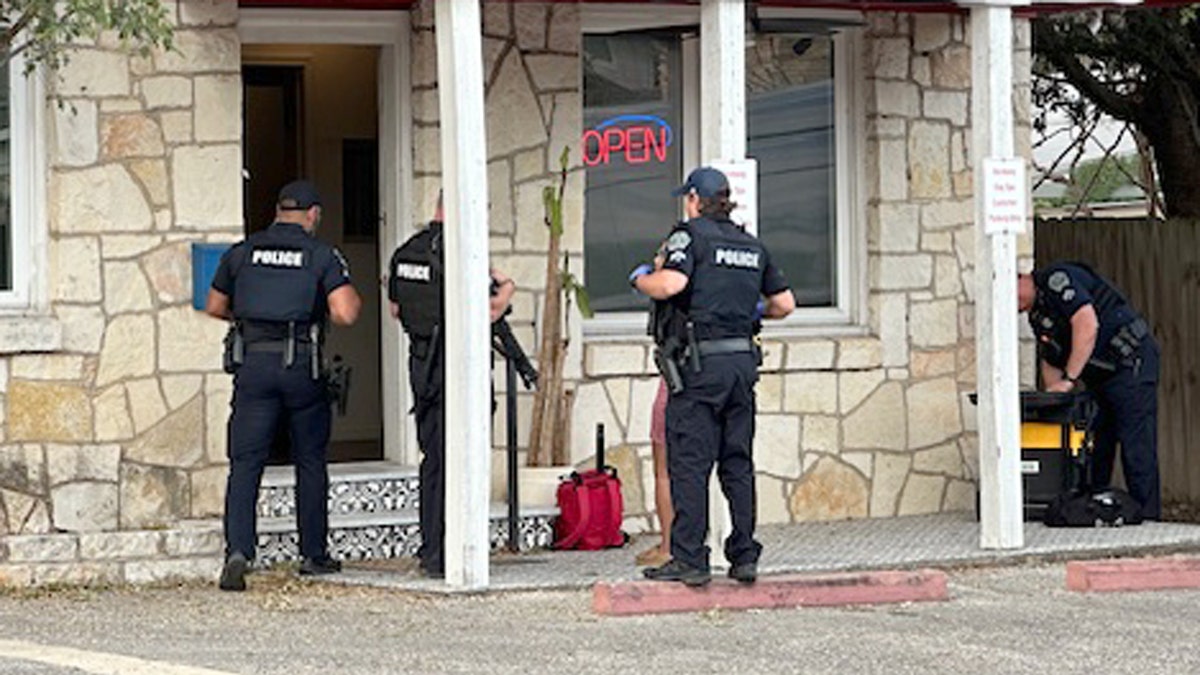NEWYou can now listen to Fox News articles!
Fox News exclusively embedded with the Austin Police Department as part of a nationwide human trafficking operation targeting illicit Chinese massage parlors.
A loudspeaker blared, “Austin Police! Search warrant! Come out with your hands up,” as detectives from the Human Trafficking Division swept one illegal parlor.
Inside, a sign advertised spa services, and another ironically warned against human trafficking. However, it didn’t take long to sense there was something much darker going on. The rooms were disheveled with mattresses, towels and shower beds.
MORE THAN 30 CHILDREN RESCUED AMID TRAFFICKING OPERATION IN MAJOR US CITY AS EXPERT WARNS OF GROWING CRISIS
Simultaneously, officers raided a second illicit massage parlor minutes away, where a woman was found sleeping and there were signs others were living there as well. Detectives collected evidence tied to trafficking, including cash and paperwork.
The raids were part of a nationwide crackdown, “Operation Coast to Coat,” involving more than 150 law enforcement agencies across the country, including teams in Texas, North Carolina, California, Missouri and New York.
The focus was the illicit massage industry, which serves as a major human trafficking hub and moneymaker for Chinese organized crime networks.
AUTHOR OF CALIFORNIA CHILD SEX TRAFFICKING BILL FORCED TO EXCLUDE FELONY CHARGE FOR BUYERS OF TEEN VICTIMS
Nationwide, more than 30 people were arrested or detained for trafficking and related charges, and more than 60 victims were rescued and offered services. According to officials, the youngest victim was just 14 and was trafficked through escort sites and forced to service more than 10 men a day. Her suspected trafficker was arrested during the operation.
This operation was coordinated by the Human Trafficking Center, the founder’s fourth time bringing various agencies from across the country together.

“About half of the agencies that we deal with will go after the illicit massage business industry, which is the fastest growing of all trafficking in America,” Dan Nash, the founder of the Human Trafficking Training Center, said.
“It is all Chinese organized crime. And all this is going right back to China. All the money’s going back to China. The victims are coming over here from China. Most of these states are like, ‘How are we allowing Chinese organized crime to do all this trafficking in America? Let’s stop it.’ And we are coming together to stop it.”
Lt. John Brooks with the Austin Police Department emphasized that the work goes beyond dismantling criminal networks; it’s about recurring victims from exploitation.
SEXTORTION SCAMS AGAINST TEEN BOYS SKYROCKET AFTER COVID, WATCHDOG SAYS
“Quite often, they are victimized, forced, coerced, threatened in some way,” Lt. Brooks said. “Their passports withheld, their families threatened, they themselves are threatened or get hooked on some sort of drug.
Lt. Brooks said his department takes a victim-centered approach, with on-site victim service counselors. The toughest challenge, he said, is getting victims to realize there are options and resources to help.

“What goes through my head when I come into a place like this and see all these beds, I am thinking what these poor women must have gone through,” Lt. Brooks said.
A national nonprofit organization, the Safe House Project, is also involved in the operation to make sure victims get the help and resources they need. The CEO and founder, Kristi Wells says it served over 1,500 human trafficking victims last year, and it is on track to serve more than 3,000 victims this year.
“We help survivors as they are looking to exit their trafficking situation, and we help make sure that, in those 10 seconds of insane courage, when they look to escape, that they have the resources that they need to receive all of the care and support to rebuild a life,” Wells said.
“We work with the individual to understand their individual situation, and we work to match them with the best safe home in the country that is equipped to meet those individualized needs.”
Read the full article here







